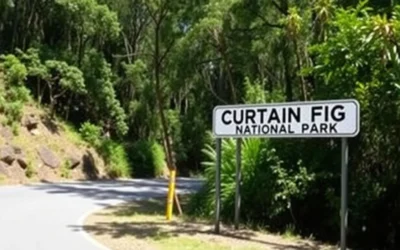✓ Accommodations✓ Flights✓ Rental Cars
When planning your next adventure, timing is everything. The weather can make or break your experience, so it’s essential to choose the right time visit. Whether you’re exploring vibrant cities or relaxing on scenic beaches, understanding seasonal changes is key.
For example, average high temperatures can reach 84°F in January, while June lows drop to 50°F. Rainfall also varies, peaking at 5.5 inches in March. These factors can influence your activities and overall enjoyment.
Seasonal events add another layer to your planning. From major festivals in January to the start of spring in September, each month offers unique experiences. By reviewing weather details and events, you can make a well-informed decision for your trip.
This guide will help you navigate the best periods to visit, ensuring your getaway is as enjoyable as possible. Let’s dive into how the right temperature and seasonal timing can elevate your travel experience.
Understanding Queensland’s Climate and Seasonal Patterns
Knowing the weather patterns can transform your travel experience. This region boasts a subtropical climate, which means warm summers and mild winters. These conditions make it ideal for outdoor activities year-round.

Coastal areas, like the Gold Coast, enjoy steady temperatures and higher humidity. In contrast, interior regions experience more extreme temperature shifts. This difference can impact your plans, especially if you’re exploring both areas during your trip.
Subtropical Climate Insights
The subtropical climate ensures warm days even in winter. This makes it a great time for activities like hiking or sightseeing. However, summer brings higher humidity, which can affect your comfort during outdoor adventures.
Coastal and Interior Weather Dynamics
Coastal regions are perfect for beach visits and water sports. The weather here is often predictable, with sunny days and occasional rain. Meanwhile, interior areas can be drier and cooler, especially during winter.
Understanding these seasonal patterns helps you plan better. Whether you’re hitting the beach or exploring the outback, the right weather ensures a memorable trip.
Planning Your Visit With Weather in Mind
Understanding how weather shapes your travel plans can make all the difference. Each season brings unique conditions that can influence your activities and overall experience. By knowing what to expect, you can pack smarter and plan better.

Seasonal Variations Impacting Your Trip
Spring and autumn are particularly pleasant times to visit. These seasons offer moderate temperatures, making them ideal for outdoor adventures. Spring brings blooming landscapes, while autumn offers cooler, comfortable weather.
During summer, the region experiences warm days, but thunderstorms are common. These can disrupt plans, so flexibility is key. Winter, on the other hand, remains mild, perfect for exploring without the heat.
Here’s a quick breakdown of seasonal weather patterns:
| Season | Temperature | Activities |
|---|---|---|
| Spring | 60°F – 75°F | Hiking, sightseeing |
| Summer | 75°F – 90°F | Beach visits, water sports |
| Autumn | 65°F – 80°F | Festivals, outdoor dining |
| Winter | 50°F – 70°F | Exploring, cultural events |
Knowing the climate variations throughout the year helps you pack appropriately. Light layers are great for spring and autumn, while waterproof gear is essential for summer. Winter calls for a light jacket for cooler evenings.
Seasonal events also add to the charm. From spring flower festivals to autumn food markets, there’s always something to enjoy. Being aware of these events ensures you don’t miss out.
Flexibility is crucial when planning your trip. Weather can change quickly, so having backup plans ensures a smooth experience. With the right preparation, you can make the most of every season.
Queensland, Australia: Best Months for a Weather-Savvy Trip
Choosing the right time for your journey can significantly enhance your experience. Whether you’re diving into the Great Barrier Reef or exploring scenic landscapes, timing plays a crucial role. Let’s break down the ideal months for adventure and how crowd levels and prices vary throughout the year.

Highlighting Ideal Months for Adventure
Spring (September to November) and autumn (March to May) are perfect for outdoor activities. These months offer moderate temperatures, ranging from 59°F to 77°F, making them ideal for exploring. Spring brings blooming landscapes, while autumn features cooler, comfortable weather.
For those planning to visit the Great Barrier Reef, May to October is the best time. During this period, water temperatures hover around 24°C, and the whale migration peaks, offering a unique experience.
Crowd Levels and Price Considerations
Peak tourist season runs from May to September and January. During these months, you’ll encounter larger crowds and higher prices for accommodations and tours. However, visiting during shoulder seasons like spring or autumn can help you avoid the rush and secure better deals.
Here’s a quick comparison of peak and off-peak periods:
| Season | Crowd Level | Price Range |
|---|---|---|
| Peak (May-Sep, Jan) | High | Expensive |
| Shoulder (Spring, Autumn) | Moderate | Affordable |
| Off-Peak (Feb, Nov-Dec) | Low | Budget-Friendly |
Planning your trip during off-peak months can save you money and provide a more relaxed experience. For example, February is the wettest month, but it’s also quieter and more affordable.
Balancing weather advantages with tourism trends ensures a memorable adventure. Whether you’re diving into the Great Barrier Reef or exploring local festivals, understanding the best time to visit makes all the difference.
Beach Adventures and Sun-Soaked Days
Sun-soaked days await you on the Gold Coast’s pristine shores. This vibrant city is a paradise for beach lovers, offering endless opportunities for relaxation and adventure. Whether you’re soaking up the sun or diving into water sports, the Gold Coast is the perfect destination for your next holiday.

Enjoying the Gold Coast Beaches
The Gold Coast boasts some of the most stunning beaches in the region. With warm temperatures averaging 75°F to 85°F, it’s a great time to enjoy swimming, surfing, or simply lounging by the water. The beaches are well-maintained, and lifeguards are on duty to ensure your safety.
For those who love activity, the Gold Coast offers a variety of water sports. From paddleboarding to jet skiing, there’s something for everyone. Don’t miss the chance to explore the coastline by kayak or join a guided snorkeling tour.
Stinger Season Safety Tips
Stinger season, which runs from November to May, requires extra caution. During this period, jellyfish can be present in the waters. Protective measures like stinger nets and lycra suits are essential for safe swimming. Always check local advisories before heading to the beach.
Here’s a quick guide to staying safe during stinger season:
| Safety Measure | Description |
|---|---|
| Stinger Nets | Installations at popular beaches to keep jellyfish out. |
| Lycra Suits | Protective clothing to prevent stings. |
| Local Advisories | Check for updates on jellyfish activity. |
Planning your beach activity around local festival schedules can enhance your experience. Events like the Gold Coast 500 Supercar Race transform the beachfront into a lively hub of excitement. Make sure to include these unique experiences in your itinerary.
Whether you’re seeking relaxation or adventure, the Gold Coast’s beaches offer something for everyone. With the right preparation, your sun-soaked days will be unforgettable.
Exploring the Outback and Interior Regions
The Outback offers a unique adventure, but timing your visit is crucial. Unlike the coastal areas, the interior regions experience extreme weather shifts. These conditions can make or break your experience, so planning is key.
During the summer months, temperatures can soar, making it challenging to explore. Winter, on the other hand, brings cooler weather, ideal for outdoor activities. Choosing the right season ensures you avoid the heat and enjoy your trip to the fullest.
Best Months for Outback Adventures
April to October is the best time to visit the Outback. During these months, temperatures range from 50°F to 77°F, providing comfortable conditions for exploration. Lower rainfall also means clearer skies and safer travel routes.
Iconic locations like Uluru and Kings Canyon are best enjoyed during this period. The cooler weather allows for longer hikes and better photo opportunities. Planning your travel around these months enhances your overall experience.
Here’s a quick guide to the weather patterns in the Outback:
| Season | Temperature | Rainfall |
|---|---|---|
| Summer (Dec-Feb) | 86°F – 104°F | High |
| Autumn (Mar-May) | 59°F – 86°F | Moderate |
| Winter (Jun-Aug) | 50°F – 77°F | Low |
| Spring (Sep-Nov) | 59°F – 86°F | Moderate |
For a deeper dive into the region’s attractions, check out Outback Queensland Tourism. Their guides offer valuable insights for planning your trip.
Preparation is essential for Outback adventures. Ensure you have enough water, spare tires, and communication equipment like a UHF radio or satellite phone. These precautions make your journey safer and more enjoyable.
Exploring the interior regions is a once-in-a-lifetime experience. By choosing the right time and preparing well, you can make the most of this incredible place.
Insider Tips for a Smooth Queensland Trip
To make your trip seamless, planning ahead is your best ally. Whether you’re exploring vibrant cities or serene landscapes, these insider tips will help you navigate like a pro. From booking accommodations to getting around, a little preparation goes a long way.
Booking and Transportation Advice
Securing your accommodations early can save you money and stress. Popular spots fill up quickly, especially during peak seasons. By booking ahead, you’ll lock in better prices and ensure you have a comfortable place to stay.
When it comes to transportation, flexibility is key. Public buses and trams are efficient and budget-friendly options. For more freedom, consider renting a car to explore the country at your own pace.
Here are some practical tips for getting around:
- Use public transport for short distances within cities.
- Rent a car for longer trips to remote areas.
- Check schedules for night services if you plan to explore after dark.
Planning your itinerary around local events can enhance your experience. From cultural festivals to seasonal celebrations, there’s always something happening. Research ahead to avoid missing out.
For a deeper dive into travel planning, check out this guide on maximizing your trip. It offers valuable insights into timing and preparation.
Lastly, always stay informed about local conditions. Weather and travel updates can help you adjust your plans on the go. Being prepared ensures a hassle-free adventure.
Cultural Attractions and Local Festivals
Immerse yourself in the vibrant culture of the region by exploring its unique festivals and events. From lively street parades to intimate cultural gatherings, there’s something for everyone. The fall months, particularly September November, are ideal for experiencing these celebrations due to the pleasant weather and lower humidity levels.
Experience Local Events and Celebrations
The region comes alive during fall, with festivals that showcase its rich heritage. One standout event is the Melbourne Cup, held in November, which combines horse racing with glamorous social gatherings. Another highlight is the Darwin Festival in August, featuring live music, art exhibitions, and outdoor performances.
Seasonal weather plays a significant role in shaping these events. Lower humidity in September November makes outdoor activities more enjoyable, while the cooler temperatures create a comfortable atmosphere for exploring. These conditions also attract larger crowds, so planning ahead is essential.
Here are some tips for navigating these celebrations:
- Arrive early to secure a good spot, especially for popular events.
- Check local weather forecasts to dress appropriately for the humidity and temperature.
- Use public transportation to avoid parking challenges during peak crowd times.
“Festivals are a window into the soul of a region, offering a chance to connect with its people and traditions.”
For those planning a trip, the fall season is a great time to explore the region’s cultural offerings. Whether you’re attending a major festival or discovering local traditions, these experiences will leave a lasting impression. To learn more about the best times to visit Brisbane, check out this detailed guide.
Accommodations and Budgeting for Your Journey
Finding the perfect place to stay can make or break your travel experience. Whether you’re looking for luxury or budget-friendly options, choosing the right accommodation is essential. The weather, especially the average temperature and rain, can influence your decision. Planning ahead ensures you get the best deals and a comfortable stay.
Where to Stay
From high-rise hotels to cozy beach cabins, there’s something for every traveler. Coastal areas often have resorts with ocean views, while interior regions offer unique stays like eco-lodges. During warmer periods, prioritize places with air conditioning to stay cool. In cooler months, opt for accommodations with heating to keep warm.
Budget hostels are a great thing for solo travelers or groups. Private rooms in Airbnb listings can be as affordable as $25 AUD per night. For a more luxurious experience, consider boutique hotels or beachfront villas. Each option caters to different needs and budgets.
Budget-Friendly Travel Tips
Traveling during off-peak periods can save you money. Light rain seasons often have lower prices for accommodation and activities. Booking in advance also helps secure better rates. Use comparison websites to find the best deals and read reviews to ensure quality.
Here are some tips to stretch your budget:
- Stay in budget hostels or shared accommodations.
- Cook your meals instead of dining out every day.
- Use public transportation to save on travel costs.
For more budget travel tips, check out this guide. It offers practical advice on making the most of your trip without overspending.
Thoughtful budgeting ensures you have more money for activities and attractions. Whether you’re exploring the coast or the interior, the right accommodation and planning can enhance your journey.
Conclusion
Your journey to this vibrant region begins with thoughtful planning. Understanding the weather and seasonal patterns ensures you make the most of every sunny day and avoid unexpected surprises. Whether you’re drawn to the sea or eager for an adventure, timing your visit during shoulder seasons offers the perfect balance of pleasant weather and fewer crowds.
As a visitor, you’ll find endless opportunities to explore. From relaxing on pristine beaches to immersing yourself in local culture, the region caters to every traveler. Use the travel tips and weather insights shared here to craft an itinerary that suits your preferences.
For more detailed guidance on planning your trip, check out this resource. It offers valuable advice on optimizing your visit to popular destinations.
Every adventure here promises unforgettable memories. With the right preparation, you’ll create experiences that last a lifetime. Start planning today and get ready to explore this incredible region!
The above is subject to change.
Check back often to TRAVEL.COM for the latest travel tips and deals.






